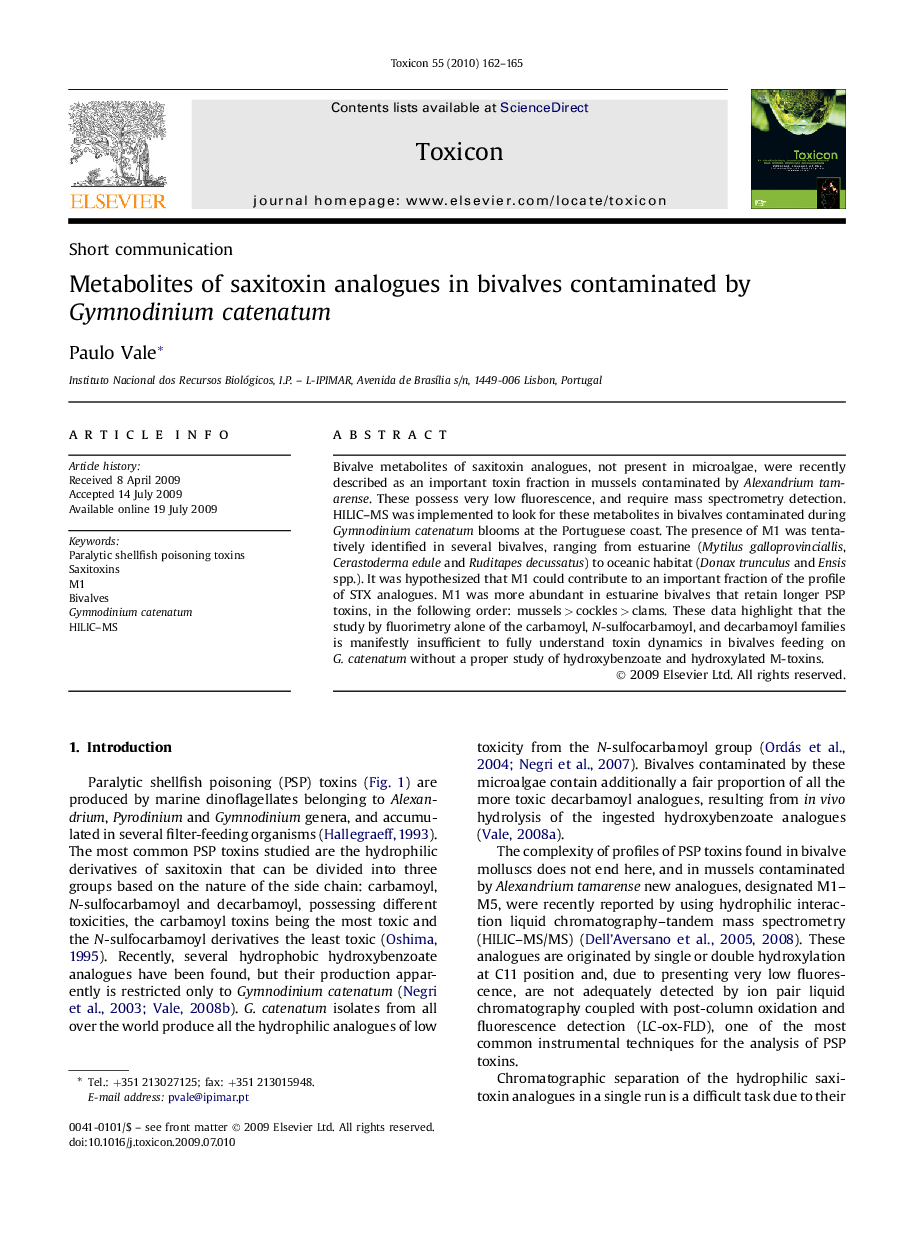| کد مقاله | کد نشریه | سال انتشار | مقاله انگلیسی | نسخه تمام متن |
|---|---|---|---|---|
| 2065460 | 1076922 | 2010 | 4 صفحه PDF | دانلود رایگان |

Bivalve metabolites of saxitoxin analogues, not present in microalgae, were recently described as an important toxin fraction in mussels contaminated by Alexandrium tamarense. These possess very low fluorescence, and require mass spectrometry detection. HILIC–MS was implemented to look for these metabolites in bivalves contaminated during Gymnodinium catenatum blooms at the Portuguese coast. The presence of M1 was tentatively identified in several bivalves, ranging from estuarine (Mytilus galloprovinciallis, Cerastoderma edule and Ruditapes decussatus) to oceanic habitat (Donax trunculus and Ensis spp.). It was hypothesized that M1 could contribute to an important fraction of the profile of STX analogues. M1 was more abundant in estuarine bivalves that retain longer PSP toxins, in the following order: mussels > cockles > clams. These data highlight that the study by fluorimetry alone of the carbamoyl, N-sulfocarbamoyl, and decarbamoyl families is manifestly insufficient to fully understand toxin dynamics in bivalves feeding on G. catenatum without a proper study of hydroxybenzoate and hydroxylated M-toxins.
Journal: Toxicon - Volume 55, Issue 1, January 2010, Pages 162–165